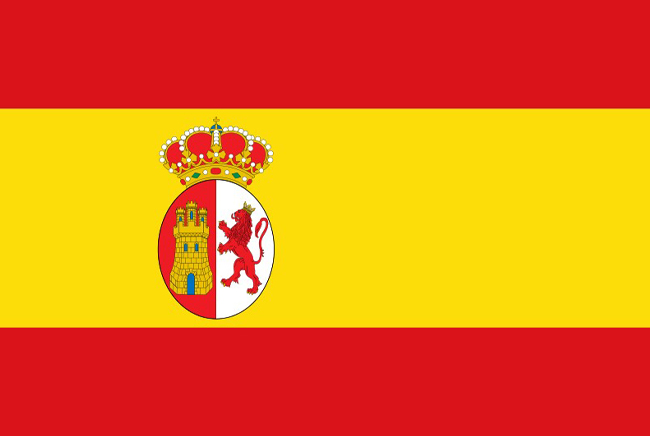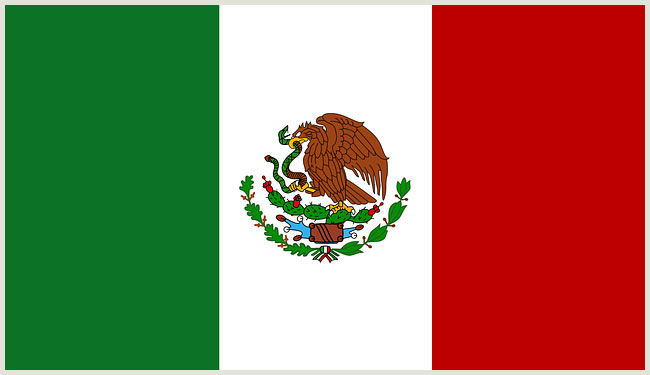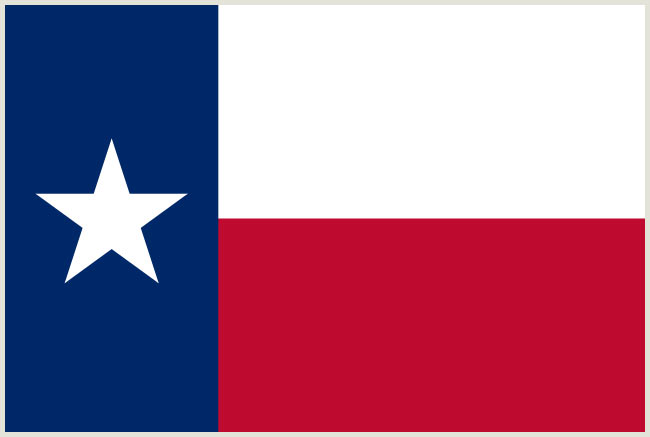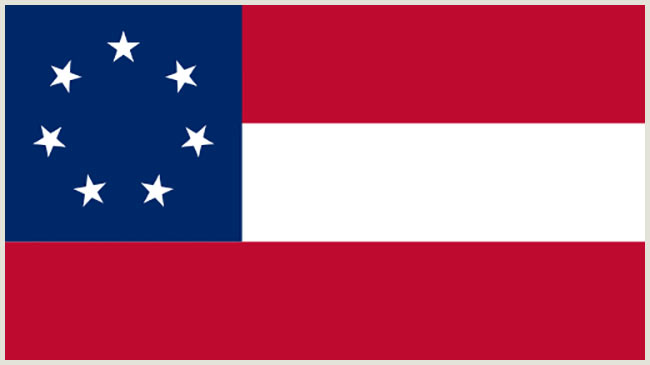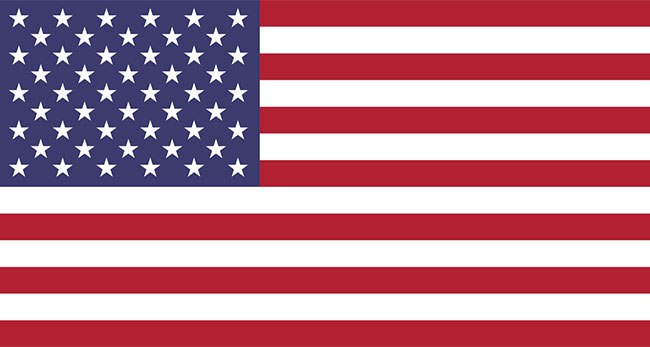The Six Flags of Texas
We weren't always under the Lone Star.
Origins of the Six Flags Display
While it is nearly impossible to say when the very first display of the "Six Flags of Texas" took place, the popularization of the display can be clearly tied to the 1936 Centennial Celebration. From bluebonnets to ten-gallon hats to the six flags display, the Centennial's dual theme of history and progress enshrined some of the most iconic Texas myths that continue to this day.
During the Centennial year, the six flags became a part Texas's visual identity, being permanently installed in the State of Texas Building (now the Hall of State) at Fair Park in Dallas and in the floor of the Capitol Rotunda in Austin. They were also an almost ever-present site on tickets, programs, and memorabilia created to celebrate the 100th anniversary of Texas's independence from Mexico.
The Bullock Museum tells the story of the nations that each of the six flags of Texas represents inside its galleries as a representation of the rich and complicated history of the Lone Star State.
Spain, 1519-1685 and 1690-1821
The Nation
Texas was at the northernmost tip of Spain's North American empire. During the first period of Spanish occupation, Texas was largely ignored, except for the explorations of a few conquistadors. It wasn't until the late 17th century when France challenged their claims with an expedition led by La Salle that Spain began seriously settling Texas. Around 1810, during the height of Spanish occupation, only about 5,000 Spaniards lived in Texas, most of them small farmers or ranchers. Spain left a lasting legacy that is still noticeable today in language, place names, and one of the largest cities in the United States—San Antonio.
The Flag
Spain had four significant flags during its occupation of North America. The royal banner of Castile and León (pictured), which presents two lions and two castles on a red and white background, is most frequently seen in displays of the Six Flags of Texas in spite of the fact that its usage in Spain ended three years prior to the Spanish claim of Texas.
France, 1685-1690
The Nation
With support from the King of France, Louis the XIV, in 1684 French explorer Robert Cavelier, Sieur de La Salle sailed for the Americas with four hundred people and four ships. La Salle's mission was to build a colony at the mouth of the Mississippi River. Plagued by bad luck from the start, the failed expedition was a disaster for the French, but La Salle's Texas colonization attempt spurred Spain to refocus their own colonization efforts to prevent Texas from becoming part of France's Louisiana colony.
The Flag
The flag most likely carried by La Salle during his expedition along the Texas coast had a white background covered by fleurs-de-lys which was a simplified version of the French royal flag.
Mexico, 1821-1836
The Nation
After an 11-year war, Mexico overthrew Spanish colonial rule. Mexico's sparsely populated northern frontier in Texas challenged long-held American Indian claims which led to tensions and attacks. It was also threatened by an expanding United States. To guard against losing Texas, Mexico authorized land agents (empresarios) to recruit settlers for new colonies in Texas, provided that the immigrants swore allegiance to Mexico. The arrangement was filled with conflict from the beginning. In 1836, Anglo-American and Tejano settlers banded together to overthrow Mexican rule.
The Flag
Two years after winning their independence, Mexico adopted its first republican flag. Nearly identical to the current flag, it contains vertical green, white, and red stripes that represent the "Three Guarantees"—religion, independence, and union. It also shows an eagle with a serpent in its mouth standing on a cactus, iconography that represents Mexico's Aztec heritage.
Republic of Texas, 1836-1845
The Nation
Years of conflict between Texans and their Mexican government led to rebellion and revolution. During a tumultuous seven months between the fall of 1835 and spring of 1836, Texans declared, fought for, and won their independence from Mexico. The Republic of Texas emerged as a rowdy frontier nation with its own nine-year historical saga packed with political turmoil, continuing conflict with Mexico and American Indians, a failing economy, and uncertain status. The brief experiment of nationhood ended when Texas became the 28th state of the United States on December 29, 1845.
The Flag
Three official flags flew over the Republic of Texas during its 9-year history. The third, adopted in 1839, is what we now know as the Lone Star Flag. Though basically consistent from its beginnings, the 1933 Texas Flag Act codified and standardized the flag's design and colors, calling for "blood red, azure blue, and white" which represented bravery, loyalty, and purity. A 1993 follow-up further defined the design of the flag and stipulated that the red and blue colors should be the same as those of the U.S. flag—"Old Glory Red" and "Old Glory Blue."
Confederate States of America, 1861-1865
The Nation
Most Texans were opposed to any interference from Northern politicians seeking to abolish the institution of slavery. When Abraham Lincoln was elected to the presidency in 1860, Texas joined with other slaveholding states in seceding from the Union and forming the Confederate States of America. Over 70,000 Texans served in the Confederate army. They fought in every theater and almost every battle of the war. Though Robert E. Lee surrendered in Virginia to Union forces in April, 1865, the Confederacy in the West, including Texas, did not surrender until June 2, 1865. On June 19 (Juneteenth), Federal forces arrived in Galveston to occupy Texas, enforce United States law, and begin the process of readmitting Texas into the Union.
The Flag
The Confederate States of America had three flag designs during its existence. The first flag representing the government of the Confederate States of America , commonly referred to as the "Stars and Bars," was adopted on March 4, 1861. Patterned after the U.S. Stars and Stripes, it features two large red horizontal stripes above and below a large white stripe, and a blue canton in the upper left bearing a circular pattern of white stars equal in number to the number of states that had seceded from the Union. For many it represents a history of enslavement and repression while to others it is a symbol of patriotic heritage.
United States of America, 1845-1861 and 1865-present
The Nation
When Texas joined the United States as its 28th state, it joined as a slave state with its attitudes and politics aligned with the South. After 16 years in the Union, Texas seceded and fought in the Civil War as a Confederate state. Following the South's surrender in 1865, Texas and the other Southern states were occupied by Union troops during Reconstruction. Texas had to meet several conditions in order to be readmitted to the Union, including adopting a new state constitution and ratifying the Fourteenth and Fifteenth Amendments to the Constitution, which granted full citizenship and equal rights to those formerly enslaved. Texas was readmitted to the Union on March 30, 1870.
The Flag
Texas entered the Union as the 28th state of the United States. The 28-Star Flag became official on July 4, 1846 and was in use for only one year until Iowa became a state and another star was added. The current 50-Star United States flag (pictured) is most commonly used in modern displays of the Six Flags.

